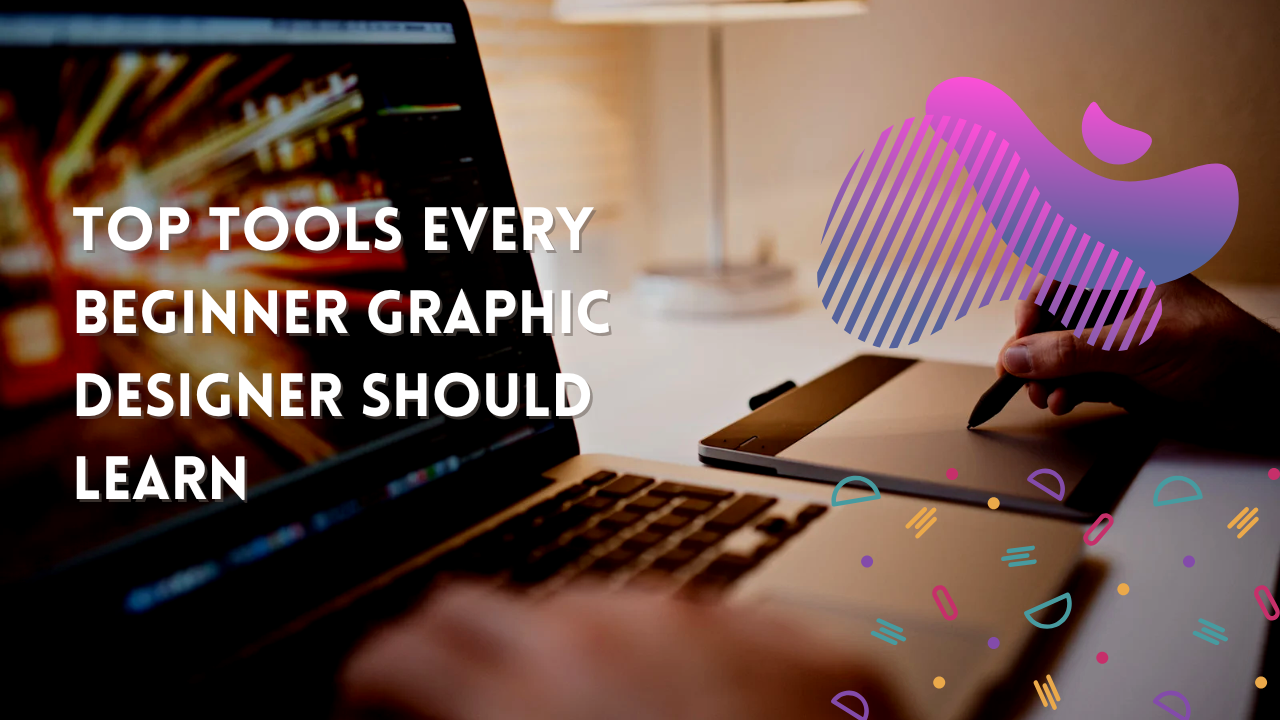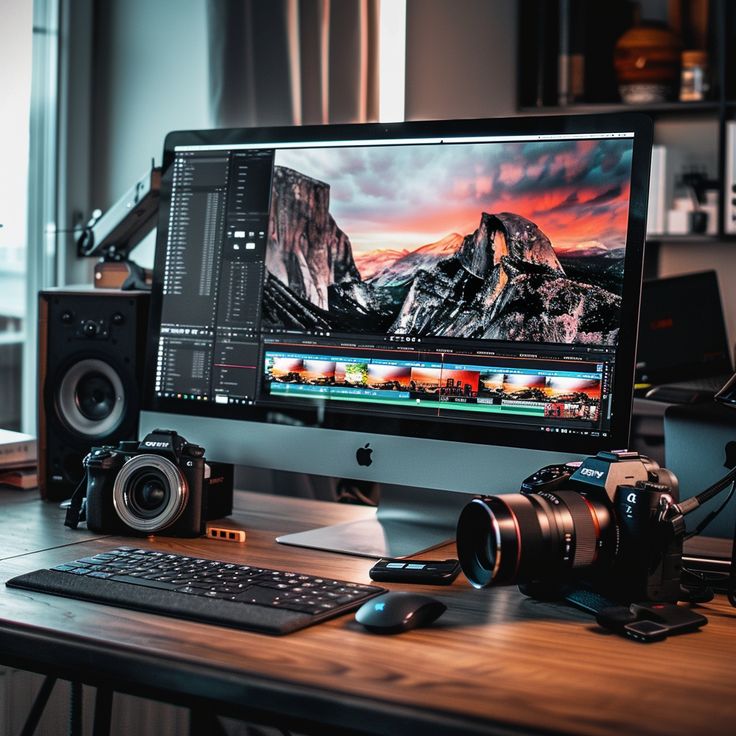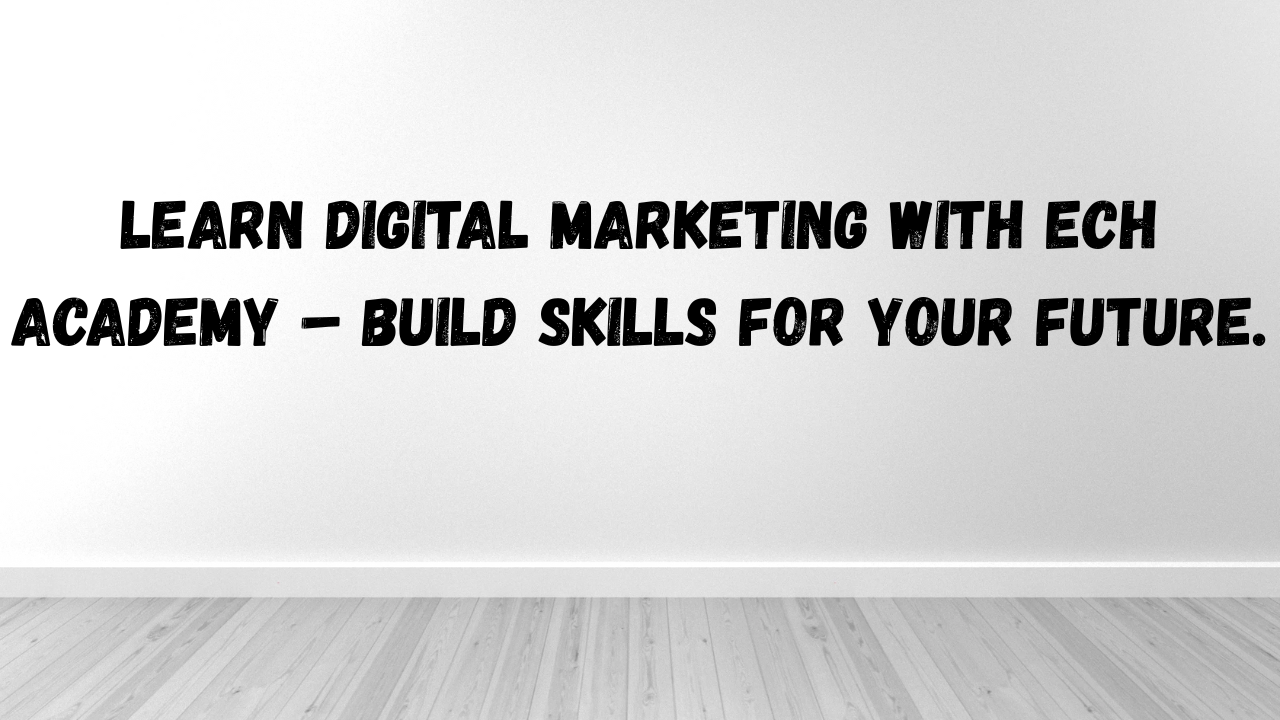
As visuals continue to dominate how we communicate, graphic design has become a vital tool for conveying messages effectively. From branding and advertising to social media and user interfaces, graphic design shapes the way we perceive, interact with, and respond to content.
For aspiring designers, the journey begins with learning the right tools — the digital brushes that bring your creativity to life. But with so many options available, how do you know where to start?
In this blog, we’ll walk you through the top 7 tools every beginner graphic designer should learn, their unique features, and how each contributes to building your design career.
🎨 Why Learning the Right Tools Matters
Before exploring the tools, it’s crucial to understand why learning design software is a key step in becoming a successful designer.It enhances your creativity and productivity
- 📌 It helps you bring professional polish to your projects
- 📌 It gives you a competitive edge in the job market
- 📌 It allows you to work with global clients and teams
With that in mind, let’s explore the must-learn design tools for beginners across different design categories: raster graphics, vector graphics, layouts, web design, and more.
Top 7 tools every beginner graphic designer should learn to boost creativity,
1. Canva – The Best Tool to Start Designing Instantly
Best For: Beginners, social media design, posters, presentations
Why Learn Canva?
Canva is the perfect tool for anyone who wants to start designing without any prior experience. It offers an intuitive drag-and-drop interface and thousands of templates for everything — Instagram posts, flyers, business cards, resumes, and more.
Top Features:
- Pre-designed templates
- Huge library of fonts, icons, and stock photos
- Collaborative features for teams
- Free and Pro versions available
Ideal For:
- Social media managers
- Students creating presentations
- Freelancers doing quick client projects
💡 Tip: Even professional designers use Canva for fast, beautiful designs on the go.
🖼️ 2. Adobe Photoshop – The Leading Tool for Professional Image Editing.

Best For: Photo editing, digital painting, composites, social media graphics
Photoshop is a powerful raster graphics editor that has set the benchmark for image manipulation and digital art. If you’re serious about becoming a designer, Photoshop is a must-learn tool.
Top Features:
- Layer-based editing
- Advanced selection and masking tools
- Retouching and correction features
- Support for custom brushes and effects
Ideal For:
- Social media creatives
- Photographers and editors
- Designers creating thumbnails, banners, or artistic posters
💡 Tip: Start by mastering layers, blending modes, and selection tools.
🧩 3. Adobe Illustrator – The Best Tool for Vector Graphics
Best For: Logo design, icon creation, illustrations, branding
While Photoshop works with pixels, Illustrator uses vector graphics, which means your designs can be scaled to any size without losing quality. That makes it perfect for professional branding and illustration work.
Top Features:
- Vector-based drawing and shape tools
- Pen tool for precision paths
- Typography and text manipulation
- Artboards for multiple design variations
Ideal For:
- Logo designers
- T-shirt and merchandise creators
- Illustrators and digital artists
💡Mastering the Pen Tool is essential for Illustrator users.
📚 4. Adobe InDesign – The Top Choice for Print & Publishing Design
Best For: Brochures, magazines, books, PDFs, and editorial design
When designing multi-page documents or complex layouts, Adobe InDesign stands out as the go-to tool. Its advanced layout precision and smooth text formatting make it perfect for both print and digital publishing projects.
Top Features:
- Grid and layout management
- Master pages for consistent design
- Integration with Photoshop and Illustrator
- PDF export and prepress options
Ideal For:
- Editorial designers
- Marketing material creators
- Ebook designers
💡 Learn how to use grids, paragraph styles, and links to streamline your workflow.
💻 5. Figma – good Choice for UI/UX and Web Interface Design
Best For: User interface design, web and mobile app mockups, team collaboration
Figma is a web-based design platform that is revolutionizing how designers collaborate and work together.”. Unlike conventional software, it runs directly in the browser and allows multiple users to work together in real time—making it ideal for today’s fast-paced UI/UX projects.”
Top Features:
- Vector editing and layout tools
- Components and design systems
- Live collaboration and commenting
- Plugins for prototyping, animations, and more
Ideal For:
- Aspiring web and app designers
- UI/UX beginners
- Designers working with developers and teams
💡Figma offers a free plan for individual users, making it an excellent choice for beginners and students.”
🎥 6.Adobe After Effects – Leading Software for Creating Motion Graphics and Visual Effects
Best For: Animations, video intros, typography effects, explainer videos
If you want to bring your static designs to life, Adobe After Effects is the ultimate motion design tool. It’s widely used in YouTube videos, TV ads, reels, and UI animations.
Top Features:
- Keyframe animation
- 3D effects and compositing
- Motion typography
- Integration with Premiere Pro and Illustrator
Ideal For:
- Motion graphic artists
- Video content creators
- UI/UX animation designers
💡 Start with simple text animations and work your way to complex visual effects.
✏️ 7. Procreate – Best Digital Art Tool for iPad Users
Best For: Drawing, painting, concept art, illustrations
Procreate is one of the top apps for illustrators and digital artists who prefer using tablets.”It provides realistic brush textures, supports high-resolution artwork, and works flawlessly with the Apple Pencil for a smooth drawing experience.
Top Features:
- Vast brush library
- Time-lapse recording
- Pressure-sensitive brush strokes
- Easy export to PSD and PNG
Ideal For:
- Aspiring illustrators
- Comic book artists
Logo sketching and concept drawing
💡 Pair it with Photoshop or Illustrator for final touch-ups.
🆓 Bonus: Free Alternatives for Budget-Conscious Beginners
If you’re just getting started and can’t yet invest in paid tools, don’t worry! Here are some excellent free alternatives:
- GIMP – Free alternative to Photoshop (raster editing)
- Inkscape – Free alternative to Illustrator (vector design)
- Krita – Great for digital painting and illustrations
- Gravit Designer – Browser-based vector design tool
- Photopea – Web-based tool that mimics Photoshop
These tools might not be as feature-rich as Adobe products, but they’re more than capable for beginner-level work and portfolio building.
As a beginner, you don’t need to master every tool immediately. The key is to choose tools based on your goals and interests, then build your skills step by step.
If you’re interested in social media design or marketing content, start with Canva and Photoshop. Canva offers quick and easy layouts perfect for Instagram, Facebook, or presentations, while Photoshop allows for deeper customization and creativity.
If your focus is on logo design and branding, then Adobe Illustrator is your good choice. It gives you full control over shapes, lines, and scalable vector graphics. You might also explore Figma if you plan to expand into brand system creation or user interfaces.
For those who dream of becoming UI/UX or web designers, Figma and Adobe XD are ideal. These tools help you create app screens, website layouts, and clickable prototypes, and they’re widely used in the tech and startup industry.
If you’re drawn to print materials like brochures, magazines, or eBooks, get comfortable with Adobe InDesign. It’s built specifically for professional layout design and makes working with text-heavy, multi-page content a breeze.
For anyone fascinated by motion graphics, video editing, or animation, Adobe After Effects is a fantastic tool to explore. It allows you to animate text, create transitions, and design motion effects for videos and web interfaces.
Finally, if you’re passionate about illustration and digital drawing, start with Procreate on the iPad, or Krita on desktop. These are excellent tools for creating artwork, sketches, and concept designs.
🔁 Practice Makes Perfect: Learn by Doing
No matter how advanced your tools are, real learning happens through practice. Start with small projects:
- Design your personal logo
- Create Instagram posts for a fictional brand
- Recreate a popular ad or flyer
- Design a mock landing page in Figma
The more you create, the better you’ll understand what tool works best for your style and goals.
🏁 Final Thoughts: The Tools Are Only the Beginning
Design tools are powerful, but they’re only half the equation.What truly distinguishes exceptional designers is their grasp of core design principles, their skill in solving visual problems, and their ability to express a distinctive creative style.”
As a beginner, your focus should be on:
- Mastering 2–3 essential tools
- Practicing regularly
- Building a strong portfolio
- Learning from real-world design challenges
🎓 Want to Learn These Tools the Right Way?
- Photoshop, Illustrator, Canva
- Portfolio development
- Real client projects
- Job placement support




